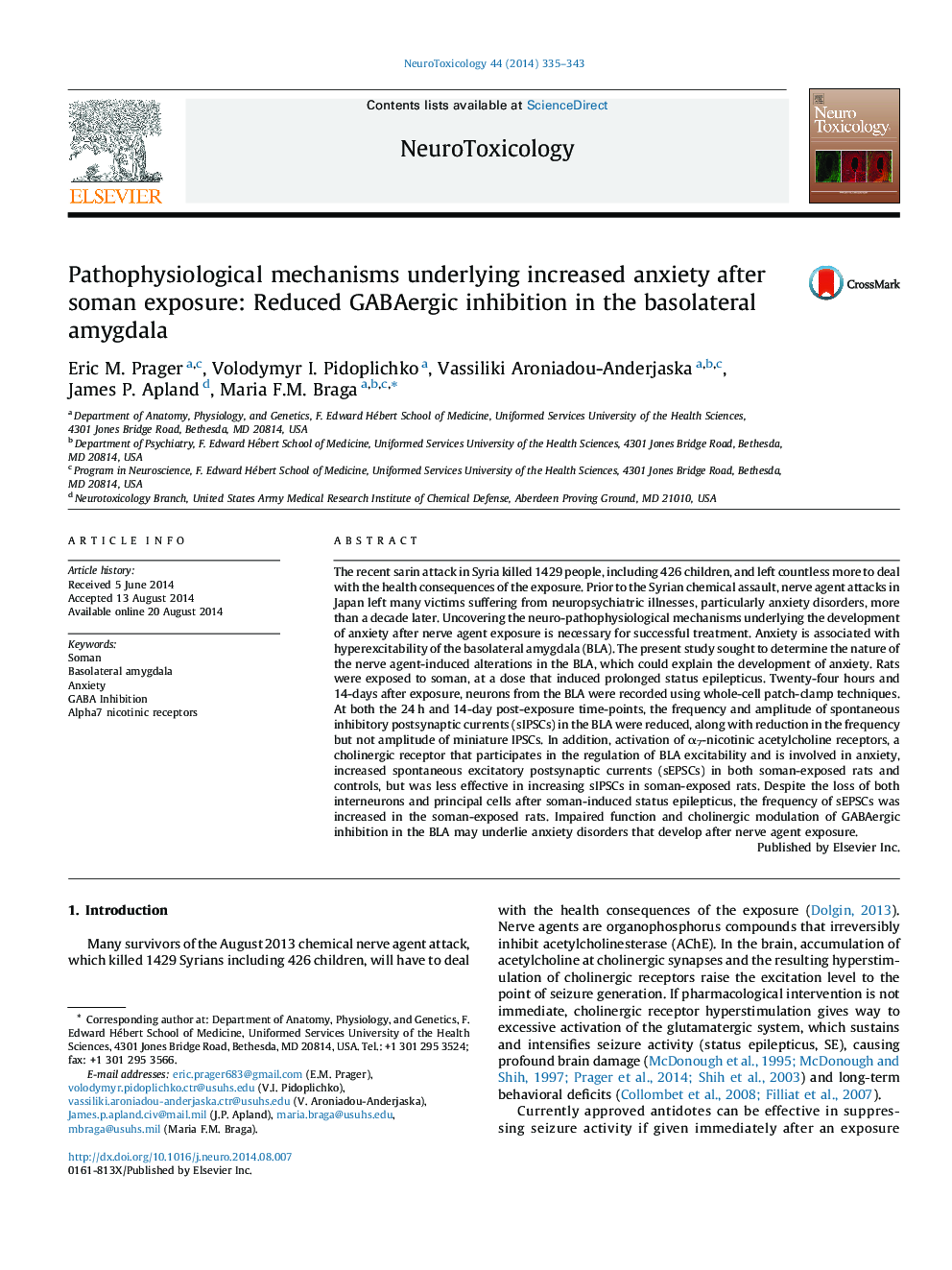| Article ID | Journal | Published Year | Pages | File Type |
|---|---|---|---|---|
| 2589687 | NeuroToxicology | 2014 | 9 Pages |
•Soman exposure reduces GABAergic inhibitory transmission in the basolateral amygdala.•The frequency but not amplitude of miniature IPSCs is also reduced.•Modulation of GABAergic synaptic transmission by α7-nAChRs is impaired.•Spontaneous excitatory transmission is increased in the basolateral amygdala.•These alterations are likely to explain the development of anxiety after exposure.
The recent sarin attack in Syria killed 1429 people, including 426 children, and left countless more to deal with the health consequences of the exposure. Prior to the Syrian chemical assault, nerve agent attacks in Japan left many victims suffering from neuropsychiatric illnesses, particularly anxiety disorders, more than a decade later. Uncovering the neuro-pathophysiological mechanisms underlying the development of anxiety after nerve agent exposure is necessary for successful treatment. Anxiety is associated with hyperexcitability of the basolateral amygdala (BLA). The present study sought to determine the nature of the nerve agent-induced alterations in the BLA, which could explain the development of anxiety. Rats were exposed to soman, at a dose that induced prolonged status epilepticus. Twenty-four hours and 14-days after exposure, neurons from the BLA were recorded using whole-cell patch-clamp techniques. At both the 24 h and 14-day post-exposure time-points, the frequency and amplitude of spontaneous inhibitory postsynaptic currents (sIPSCs) in the BLA were reduced, along with reduction in the frequency but not amplitude of miniature IPSCs. In addition, activation of α7-nicotinic acetylcholine receptors, a cholinergic receptor that participates in the regulation of BLA excitability and is involved in anxiety, increased spontaneous excitatory postsynaptic currents (sEPSCs) in both soman-exposed rats and controls, but was less effective in increasing sIPSCs in soman-exposed rats. Despite the loss of both interneurons and principal cells after soman-induced status epilepticus, the frequency of sEPSCs was increased in the soman-exposed rats. Impaired function and cholinergic modulation of GABAergic inhibition in the BLA may underlie anxiety disorders that develop after nerve agent exposure.
